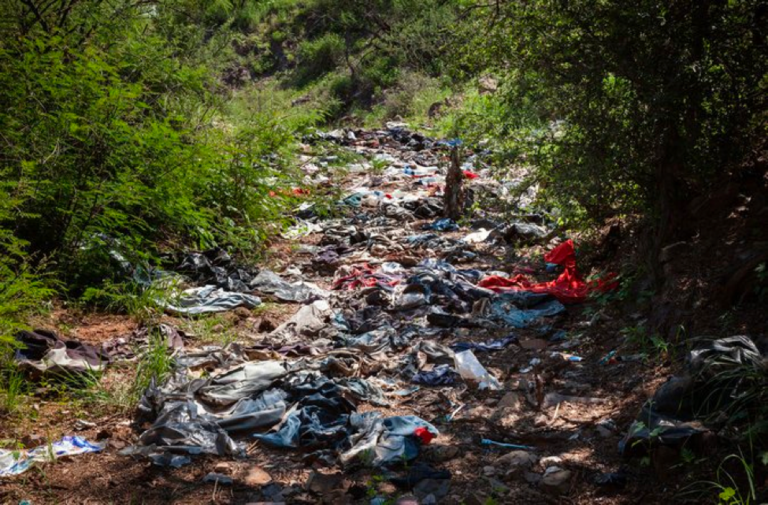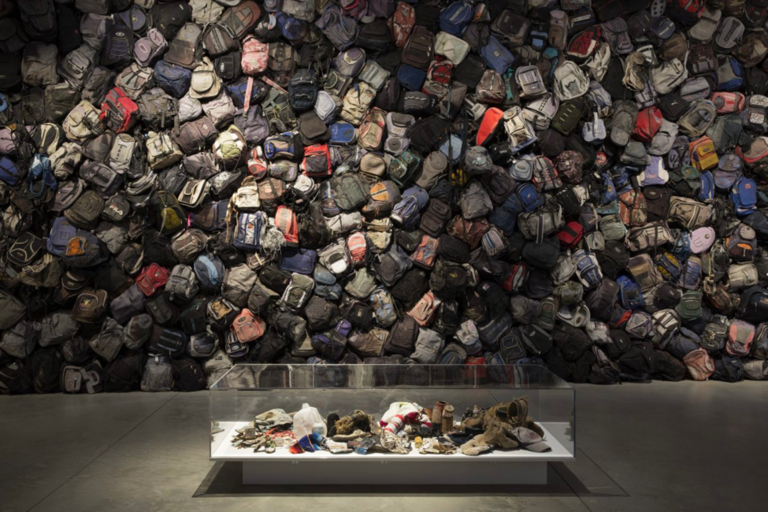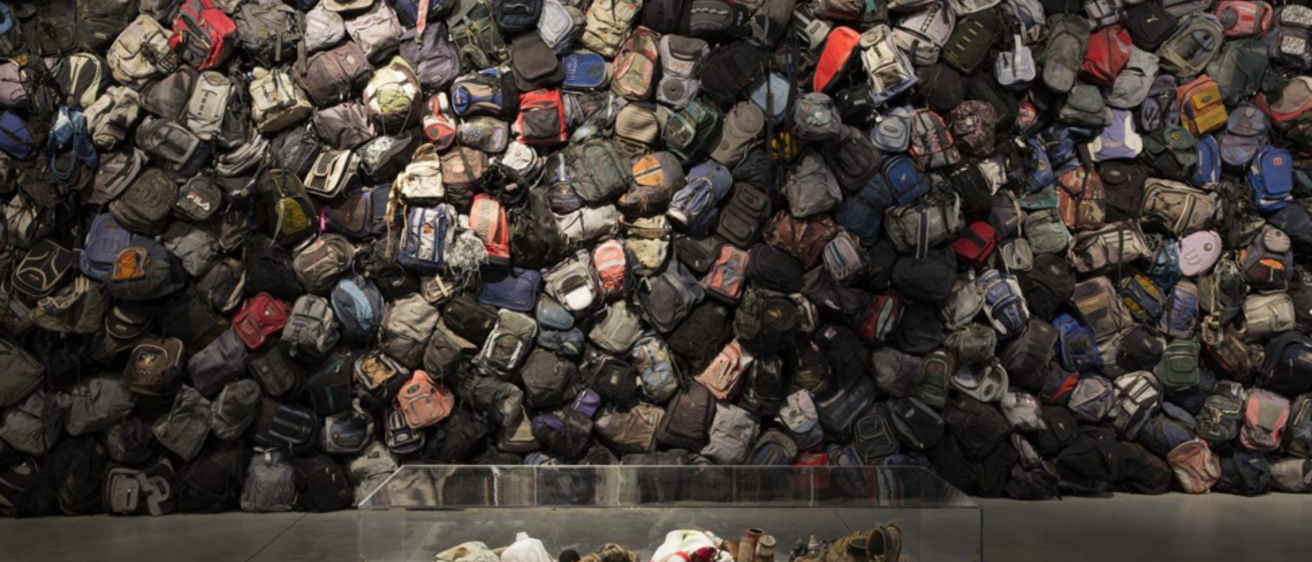Across campus and community, you’ll be seeing the poster for our upcoming symposium, Against Amnesia: Archives, Evidence, and Social Justice. We wanted a powerful image to anchor our communications for this event—one that captures the urgency and importance of archiving in today’s political climate, especially in the name of human rights. Living, breathing archives, uncomfortable, incriminating, and at risk of erasure. We found our image in an exhibition of migrant backpacks salvaged from Arizona’s arid southern border.

Jason De León, an anthropologist at the University of Michigan and a recent MacArthur “genius” grant recipient, directs the Undocumented Migration Project, a long-term analysis of clandestine border crossings between Mexico and the U.S. Since 2008, De León and his students have traveled to the Sonoran Desert to collect items lost or discarded by undocumented migrants as they near the border: water bottles, toiletries, shoes, dentures, diapers, birth certificates, family photos, wallets, rosaries.
Death in the desert
The objects, De León told the University of Michigan News Service, “tell stories of hope, desperation, suffering, and sometimes death.” Roughly 200 people die each year from dehydration, fatigue, and heatstroke as they traverse the Sonora, the hottest desert in North America. In 2012, De León and his students discovered the body of a woman face-down on a ridge. Her name, they discovered later, was Marisol, a mother of three from Ecuador. He recounts this discovery in his 2015 book, The Land of Open Graves: Living and Dying on the Migrant Trail.

The Smithsonian Institute Archives houses the artifacts—over 10,000 objects, the largest collection of migrant artifacts in the country—and various museums have exhibited the items over the years.
Visceral and confrontational
The photo that graces the poster for the 2018 Provost’s Global Forum/Obermann Humanities Symposium was taken by Marc Tatti and comes from the 2017 exhibition “State of Exception/Estado de Excepción” at New York’s Parson’s School of Design, which featured hundreds of migrant backpacks retrieved by De León’s crew.

Upon entering the gallery,” wrote Leeron Hoory in the Village Voice, “visitors will note the nearly eight hundred backpacks—JanSport, Wilson, Puma, Nike—festooning one wall, some in better condition than others. It’s the personal details that stand out: the handwoven lanyards tied to zippers; the name Nadia, written in black Sharpie; a child-sized Dora the Explorer pack. Some are reduced to zippers and thread….Visceral and confrontational, the exhibit leaves the gallery smelling of sweat from these artifacts and the bodies that left them behind.”
Curator Amanda Krugliak intended the exhibit to “inspire a range of conversations, from the power of ‘found objects’ to evoke stories and profound meanings, to a new way of thinking about immigration policy.”
Likewise, our intention with the symposium is to invite a new way of thinking about archives—not as a collection of inert historical documents concealed from view, but as varied, relevant, multi-sensory conduits for stories that desperately need to be heard.
